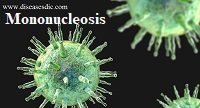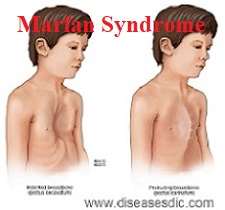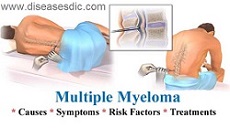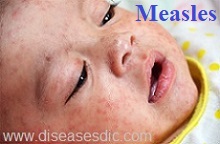Definition Melanoma, the most serious type of skin cancer, develops in the cells (melanocytes) that produce melanin the pigment that gives your skin its color. Melanoma can also form in your eyes and, rarely, in internal organs, such as your intestines. Melanoma History Although melanoma is not a new disease, …
Read More »Mononucleosis – Causes, Symptoms, and Prevention.
Definition Infectious mononucleosis (mono) is often called the kissing disease. The virus that causes mono is transmitted through saliva, so you can get it through kissing, but you can also be exposed through a cough or sneeze, or by sharing a glass or food utensils with someone who has mono. …
Read More »Multiple sclerosis – Definition, Treatment, and Prevention.
Definition Multiple sclerosis is a disease that involves an immune-mediated process that results in an abnormal response in the body’s immune system that damages central nervous system (CNS) tissues in which the immune system attacks myelin, the substances that surrounds and insulate nerves fibers causing demyelination that leads to nerve …
Read More »Myotonic Dystrophy – Causes, Treatment and Prevention.
Definition Myotonic dystrophy is an inherited type of muscular dystrophy that affects the muscles and other body systems. People who have myotonic dystrophy have muscle wasting and weakness in their lower legs, hands, neck and face that get worse over time. Signs and symptoms of myotonic dystrophy usually develop when …
Read More »Marfan Syndrome – Causes, Risk Factors, and Treatment.
Definition Marfan syndrome is a genetic disorder that affects the body’s connective tissue. Connective tissue holds all the body’s cells, organs and tissue together. It also plays an important role in helping the body grow and develop properly. Normal and marfan syndrome Connective tissue is made up of proteins. …
Read More »Multiple Myeloma – Stages, Risk factors and Medications.
Introduction Multiple myeloma is a cancer that occurs in a type of white blood cell called plasma cell. Plasma cells help to fight infections by making antibodies that recognize and attack germs. Multiple myeloma causes cancer cells to accumulate in the bone marrow, where they crowd out healthy blood cells. …
Read More »Motor Neuron Disease – Types, Risk Factors and Prevention.
Motor Neurone Disease – Definition Motor neurone disease (MND) is a neurodegenerative disease that causes rapidly progressive muscle weakness and eventually results in paralysis. Specifically, this disease affects nerve cells (motor neurons) that control the muscles that enable to move, speak, breathe and swallow. MND is also known as Amyotrophic …
Read More »Measles: Symptoms, Complications and Treatment.
Definition – Measles Measles, or rubeola, is a viral infection of the respiratory system. It is a very contagious disease that can spread through contact with infected mucus and saliva. An infected person can release the infection into the air when they cough or sneeze. The measles virus can live …
Read More » Diseases Treatments Dictionary This is complete solution to read all diseases treatments Which covers Prevention, Causes, Symptoms, Medical Terms, Drugs, Prescription, Natural Remedies with cures and Treatments. Most of the common diseases were listed in names, split with categories.
Diseases Treatments Dictionary This is complete solution to read all diseases treatments Which covers Prevention, Causes, Symptoms, Medical Terms, Drugs, Prescription, Natural Remedies with cures and Treatments. Most of the common diseases were listed in names, split with categories.








